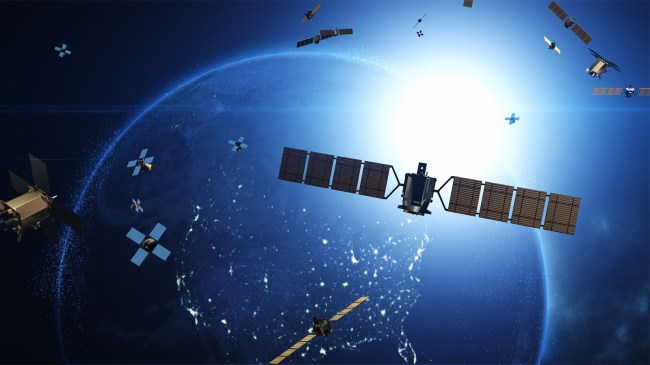iStockphoto
The European Space Agency (ESA) has issued a warning about all of the space junk surrounding Earth and how it could cause significant issues in the future. There is so currently much clutter floating in space around the planet that it may cause some orbits to become unusable in the future.
“Even if we created no new space debris, it would not be enough to prevent a runaway series of collisions and fragmentations,” ESA said in their 2025 Space Environment Report. “The actual number of space debris objects larger than 1 cm in size – large enough to be capable of causing catastrophic damage – is estimated to be over 1.2 million, with over 50,000 objects of those larger than 10 cm.”
The concerns made by the ESA echo those of the Kessler syndrome, or Kessler effect. In 1978, NASA scientists Donald Kessler and Burton Cour-Palais explained, “As the number of artificial satellites in Earth orbit increases, the probability of collisions between satellites also increases. Satellite collisions would produce orbiting fragments, each of which would increase the probability of further collisions, leading to the growth of a belt of debris around the Earth.”
Since the NASA scientists wrote that in 1978, there have an untold number of man-made satellites launched into orbit around Earth, with many more to come. Earlier this month, for example, start-up SpinLaunch announced that is planning to use a giant centrifugal cannon to launch hundreds of flattened “microsatellites” into low-Earth orbit.
Unfortunately, according to the European Space Agency report, “space debris objects larger than 1 cm in size – large enough to be capable of causing catastrophic damage – is estimated to be over 1.2 million, with over 50.000 objects of those larger than 10 cm.”
The ESA added that “current levels of compliance to space debris mitigation guidelines at large are insufficient for achieving a sustainable space environment long-term, and there is a growing consensus that stricter mitigation practices need to be implemented globally.”
If that isn’t done, the ESA warns, “the extrapolation of the current changing use of orbits and launch traffic, combined with continued fragmentations and limited post mission disposal success rate could lead to a cascade of collision events over the next centuries.”
In 2019, the European Space Agency reported there were over 750,000 pieces of space debris orbiting Earth. With that number continuing to grow and expand due to more launches and collisions, it could affect our ability to even travel into space. There is also the concern that some of this space junk could collide with satellites that are used for television, GPS, weather-tracking services, and cell phone service.
“We could have a major space junk event that will mean that we can’t launch beyond low-Earth orbit and we trap ourselves on Earth,” Ralph Dinsley, founder and executive director of Northern Space and Security LTD said. “The simplest event is that it will slow down how we do space exploration. It has been ten years since the last satellite on satellite collision. The likelihood of it happening is very low but there is still that potential. But the catastrophic results could be huge.”
Donald Kessler said he doesn’t foresee that happening, but he does think it all of that space junk could affect our future ability to study space.
“What will hurt the most is not losing access to other planets, it’s losing the Hubble telescope. It could eventually become just a piece of debris,” he said. “It’s our scientific curiosity that’s at risk.”
To help alleviate these problems, the ESA is recommends that all future spacecraft be designed to burn up within five years of the end of their life. Their previous recommendation, issued in 2023, had been 25 years. In the meantime, the ESA has been working on programs to try and manually remove some of that debris.
Content shared from brobible.com.

